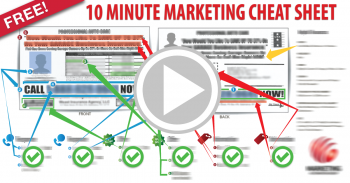- You are here:
- Home »
- Blog »
- Business »
- Looking for Profit in all the Wrong Places
Looking for Profit in all the Wrong Places
 Take Charge of the Numbers to Take Charge of Your Business
Take Charge of the Numbers to Take Charge of Your Business
I talked recently about numbers that tell us something about the current business climate. Now let’s talk about the numbers that make, or break, your business.
Dawn Fotopulos is the HiddenProfitProphet. I had a chance to sit down recently with this award-winning author, educator, and entrepreneur to talk about how small business owners can get a handle on their financial details, do better business—and make more profit. I got to know Dawn when she joined my MAG Elite Mastermind Group.
Dawn helps small business owners find profit where they least expect it—in their balance sheets. She wrote the best-selling book, Accounting for the Numberphobic: A Survival Guide for Small Business Owners, and offers great tips and advice on her website.
Smart financial moves—get the inside scoop from an expert
Talk to a mentor, advisor, or top talent in your field when you or your business drift. The later you look for help, the harder it is going to be on your business—and your profit. I work with professionals like Dawn to fine tune business plans and establish marketing strategies to crush their competition.
I talked to Dawn to get her take on financial questions common to all small business owners. Here are some of her responses to my questions. To learn more about Dawn’s great ideas—read her excellent book.
Q. At some point or other, entrepreneurs hit a wall. When struggling with their bottom line, what is the biggest mistake small business owners make?
A. Every business owner thinks if they’re having trouble paying the bills, they need more customers. They might very well be scaling an unprofitable business! In fact, that’s what many used car dealers are doing. They think if they sell more cars, they’ll make more money. It’s exactly the opposite. If you’re losing money on every deal, you really can’t make it up in volume.
Q. Do you find entrepreneurs are good with ideas, but challenged by their financial statements? If so, how are they challenged?
A. I took a poll at The New York Times Small Business Summit Conference over a five-year period. During that time, I asked 5,000 small business owners one simple question—“True or false, a Net Income Statement and a Profit and Loss Statement are the same thing.” Only one out of one hundred business owners knew that was true. That’s not a problem—it is an epidemic. Would you ever drive your car with your eyes closed? No. Then learn how to read your financial dashboard. By financial dashboard, I mean your Income Statement, Cash Flow Statement and Balance Sheet. These documents are key to running your business and making good decisions. No matter what business you’re in, you must be able to answer three questions:
– Are you making money?
– Do you have enough cash to pay the bills?
– Are you building wealth or destroying it?
Your financial dashboard will answer each of these questions.
Q. Do you encounter small business owners who are afraid of the financial work in front of them? Why do you think that is? What are they most afraid of?
A. They’re not afraid; they’re terrified.
It’s too intimidating. They feel like they have to become an accountant. If they’ve taken accounting courses, they never understood debits, credits and reconciliation. What if a business doesn’t need to learn how to keep the books—but just learn how to read their financial dashboard?
Many think their accountant’s job is to read their financial dashboard. Your accountant will not run your business any more than your mechanic will drive your car. It’s your job to navigate.
Your financial dashboard shows you how. Most people are intimidated because the topic is complex and often taught by very knowledgeable but really boring people. That’s why I wrote the book and had it illustrated by a Disney artist. It was time to make running a business fun, exciting and interesting again. If you look at the comments on Amazon, you’ll see many people who were once intimidated are now finally gaining the confidence they need to run profitable, cash-rich companies.
Q. You have written a well-received book about diving into financial details. Can you explain a couple of concepts from the book, such as what are the most important financial documents and how can these documents help a small business owner?
A. The Net Income Statement is like the speedometer in your car. How fast is your business producing profits? Is your business beyond the breakeven point (is it self-sustaining)?The Cash Flow Statement is like your gas gauge. It will show you how much cash is available to run the company and for how long. Your Balance Sheet is like an oil pressure gauge. Too little pressure (debt), and you don’t have ignition. Too much debt, and you’ll go bankrupt. The Balance Sheet is also the Net Worth Statement of the business. Every banker and investor scrutinizes this statement. Make sure you know how to read it, and improve on it from operations. These statements are your GPS for running your business. Think about it, if you want to get to your destination, wouldn’t it be helpful to have a path to get there? I can get to Ogden, Utah, by trial and error but it will take my lifetime that way. These financial statements, like a GPS, get to you the promised land of living off your own cash flow a lot faster.
Q. What are the basic steps an entrepreneur can take to manage these important details and create profit?
A. Gross margin. Gross margin. Gross margin. Ever watch Shark Tank? Like the sun rising in the east, every business owner is asked, “what are your margins” on their products. Why? Because margins drive profitability. There’s a lot more I can say to your question. The best thing to do is read my award-winning book, “Accounting for the Numberphobic; A Survival Guide for Small Business Owners.” It won “Best Business Book of 2015 in Economics” from Small Business Trends. The book takes you by the hand and explains, line by line, what’s happening in your business and provides you simple, no-cost strategies to fix the broken things. It should be mandatory reading for anyone going into business.
Q. Are there accounting and profit choices you would make differently for a products-based versus a service-based business?
A. Valuing time is perhaps the biggest challenge for service providers. Also, managing invoicing and billing becomes more complicated, especially for service providers who work on multi-phase projects. Time is your only recoverable asset so keeping track of that, especially as it relates to direct labor costs, is crucial.
I’ve seen many service providers who are so busy giving great service to their clients, they don’t track how much time that’s actually costing them. A large client could in fact be their least profitable client.
In either product or service businesses, the owners need to look at their gross margin two ways—by product or service and by client. For the business owners who have purchased my Hidden Profit Academy courses, they get this. That gives them visibility to really know what products or services are working hard for them and which ones to change or eliminate.
Q. In a downturn or even when the invoices have not yet been paid, how can small business owners maintain their cash flow?
A. First, you have to diversify your client base. If you only have one or two big clients, you’re at risk if either of them leaves or falls on hard times.
Second, you have to have two ways out of the room. Always apply for a credit line when you don’t need it, then you have it if cash gets tight.
Stay on top of your accounts receivables aging report like a hawk. Know exactly who owes you money, how much, and for how long. If any receivable ages beyond 30 days, the likelihood you’ll ever get paid goes down dramatically.
Learn how to collect outstanding debts from clients. This is a more important skill than learning how to sell. Business owner need to learn this early on. My book provides sample openings and dialogues to do this painlessly. Chapters 5 and 6 are worth the entire ten chapter book.
Q. You have talked about simple steps, “One Thing,” to add cash to your business account right away. Can you give us one or two tips?
A. Make sure your invoice includes not just the date of delivery, but what you delivered to your client. Remind them of what a great decision they made to hire you. You didn’t just build a website, you improved the customer experience and thus the client gained increased traffic and engagement. Once they read this, they can’t wait to pay the bill. Stop waiting too long to send the client an invoice. Invoice them weekly or bi-weekly. You’ll get paid faster and the client won’t be overwhelmed.
Q. What financial trends do you see with small businesses, the recovering economy, and a faster paced, more volatile market for goods and services?
A. Nimbleness is key. Don’t make or accept long-term commitments. Be on top of technology. Everything you can do to save time, decrease error rates, and to streamline daily processes is worth your investment. In terms of macro trends, I’m most concerned about central bank policy. No society in the history of man has survived currency debasement over the long haul. Just ask the Romans.
Take control of your business by understanding your real financial situation. Get good counsel about your financial dashboard—and your business or marketing plan—to make more money doing what you love. When you are ready to ramp up your income—call me at 585-633-7563.
Yours in profit,
Bob Britton



